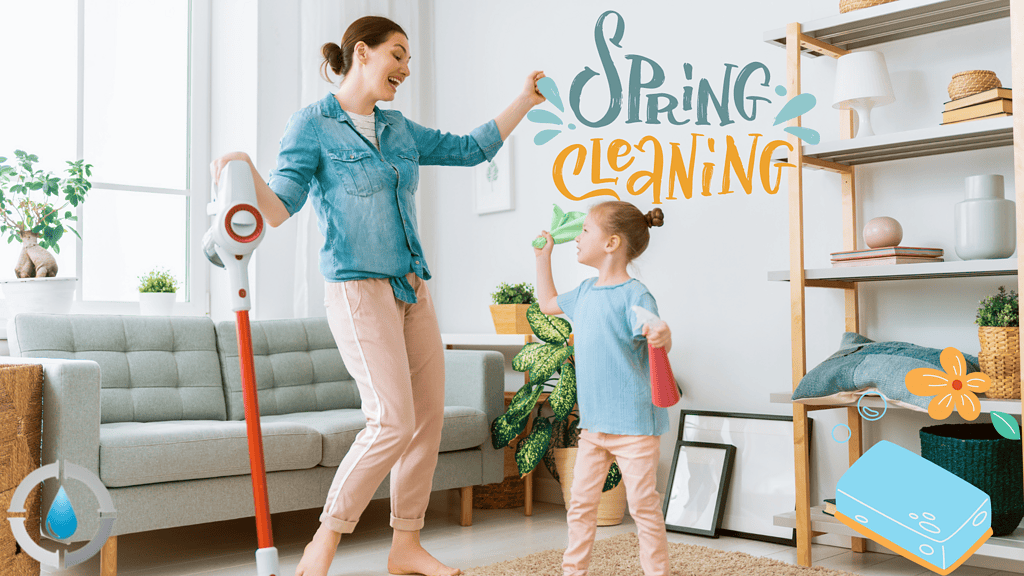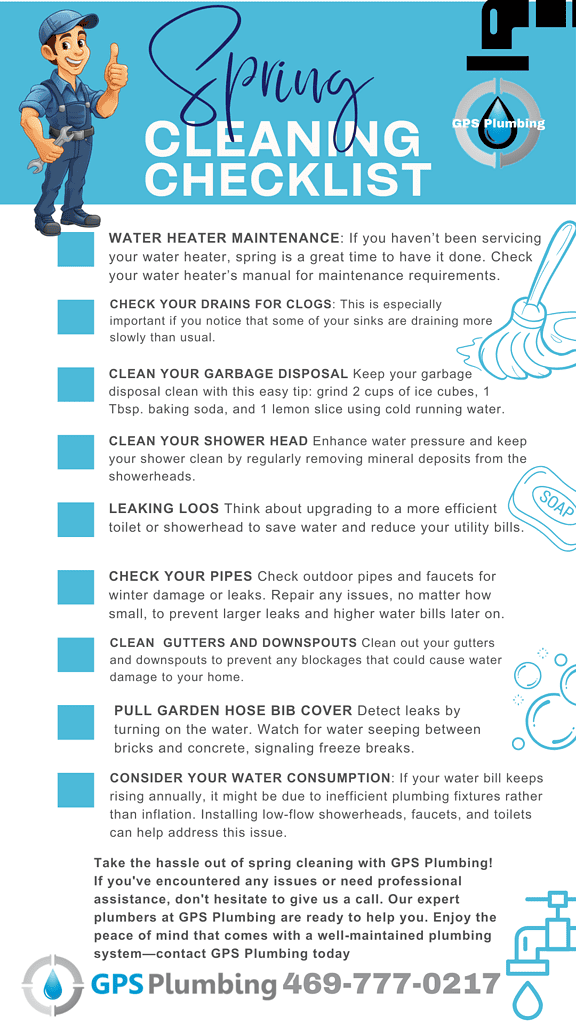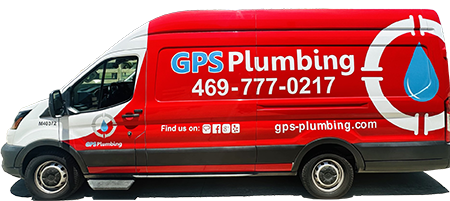
Spring is the season of renewal, making it the ideal time to give your home some much-needed attention—including your plumbing system. After the cold winter months, ensuring your plumbing is in top condition can help you avoid costly repairs and disruptions later on. At GPS Plumbing, we understand the importance of proactive maintenance, which is why we’ve created this spring plumbing maintenance checklist. By following these spring plumbing tips, you’ll not only keep your plumbing functioning efficiently but also save time and money by preventing unexpected issues before they arise. Whether it’s flushing your water heater or checking for leaks, we’ve got you covered with essential steps to keep your system running smoothly all year round.
1. Water Heater Maintenance
If you haven’t serviced your water heater recently, now is the time. Regular maintenance extends its life and ensures it operates efficiently.
- Flush the Tank: Sediment buildup can reduce efficiency and lead to damage. Flushing the tank removes this buildup.
- Check for Leaks: Look for signs of rust or water around the base. Small leaks can signal bigger problems.
- Learn more about proper water heater maintenance by visiting the EPA’s Water Heater Maintenance Guide.
Learn more about water heater maintenance.
2. Check Your Drains for Clogs
Slow drains can lead to serious plumbing problems if not addressed. Spring is the perfect time to ensure all your drains are clear.
- Use a Plunger or Drain Snake: For minor clogs, these tools can help. Avoid chemical drain cleaners that can damage pipes.
- Professional Cleaning: Call a professional if you’re dealing with recurring clogs.
Schedule a drain cleaning with GPS Plumbing.
3. Clean Your Garbage Disposal
Your garbage disposal can harbor bacteria and odors if not cleaned regularly.
- DIY Cleaning: Grind 2 cups of ice cubes, 1 tablespoon of baking soda, and a lemon slice in the disposal with cold water to remove debris and odors.
Learn more about kitchen plumbing maintenance.
4. Clean Your Showerhead
Mineral deposits can clog your showerhead, reducing water pressure.
- Descale: Soak the showerhead in a mixture of vinegar and water or tie a vinegar-filled plastic bag around it for a few hours.
Contact GPS Plumbing for bathroom plumbing assistance.
5. Check for Leaking Toilets
A leaking toilet can waste a lot of water and increase your utility bills.
- Test for Leaks: Add food coloring to the toilet tank. If color appears in the bowl after 10 minutes, you have a leak.
- Upgrade to Low-Flow: Consider upgrading to a more efficient toilet.
Explore toilet repair and installation services.
6. Inspect Pipes for Winter Damage
Winter weather can be tough on your pipes, especially outdoor ones. Check for signs of damage.
- Inspect for Damage: Look for cracks, leaks, or other signs of damage.
- Repair or Replace: Address even small issues before they turn into bigger, costly repairs.
Schedule a plumbing inspection with GPS Plumbing.
7. Clean Gutters and Downspouts
Gutters and downspouts help protect your home from water damage.
- Clear Debris: Remove leaves and other debris to ensure proper water flow.
- Inspect for Damage: Check for wear or damage and make necessary repairs.
Learn more about home exterior maintenance.
8. Check the Garden Hose Bib
Check for leaks as you begin using your garden hose again.
- Test for Leaks: Turn on the water and look for leaks around the hose bib. Water seeping between bricks may indicate a freeze break.
Contact GPS Plumbing for outdoor plumbing issues.
9. Review Water Usage
Spring is a great time to assess your water usage and make upgrades to save water.
- Install Low-Flow Fixtures: Save water and reduce utility bills with low-flow showerheads, faucets, and toilets.
- Monitor Your Bill: Unexpected increases in your bill could indicate a leak.
Learn more about water-efficient upgrades.
10. Test Your Water Pressure
Water pressure that’s too high or too low can lead to various plumbing issues, from leaks to inefficient appliances. Spring is a great time to check and adjust your water pressure.
- Check Your Pressure: Use a water pressure gauge to ensure the pressure in your home is between 50 and 75 PSI. Higher pressure can damage pipes, while lower pressure can make appliances inefficient.
- Install a Pressure Reducing Valve (PRV): If your water pressure is too high, consider installing a PRV to regulate it and prevent damage. This guide will help you understand the importance of pressure reducing valves and how they protect your plumbing system from high water pressure.
Water pressure is the key to a healthy home, ensuring your plumbing system operates efficiently while protecting your pipes and appliances from damage.
Contact GPS Plumbing for water pressure testing and valve installation.
11. Install Water Leak Alarms for Added Protection
Spring is an excellent time to enhance your plumbing system by installing water leak alarms. These alarms can detect leaks early and alert you before they cause significant damage. Placing alarms near water heaters, under sinks, or in basements provides an extra layer of protection, allowing you to address issues promptly.
Learn more about the benefits of water leak alarms and how they can protect your home by checking out our guide on Water Leak Alarms for Home Protection.
This proactive step will help prevent costly repairs and give you peace of mind throughout the year.
Download our Spring Cleaning Checklist and ensure your plumbing system is ready for the season! If you need assistance, GPS Plumbing is here to help. Whether you need water heater maintenance, drain cleaning, or leak repairs, contact us for professional service.


